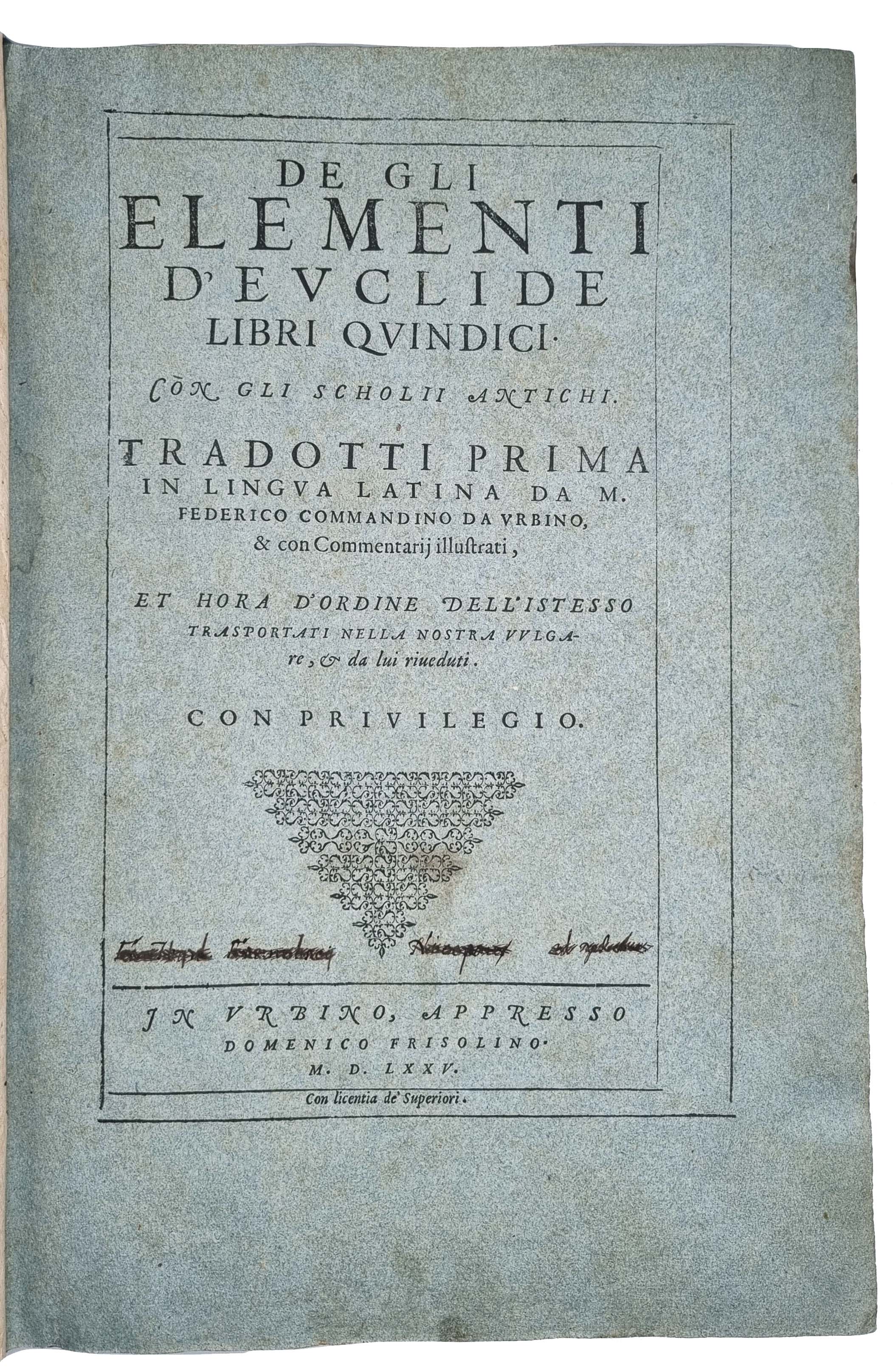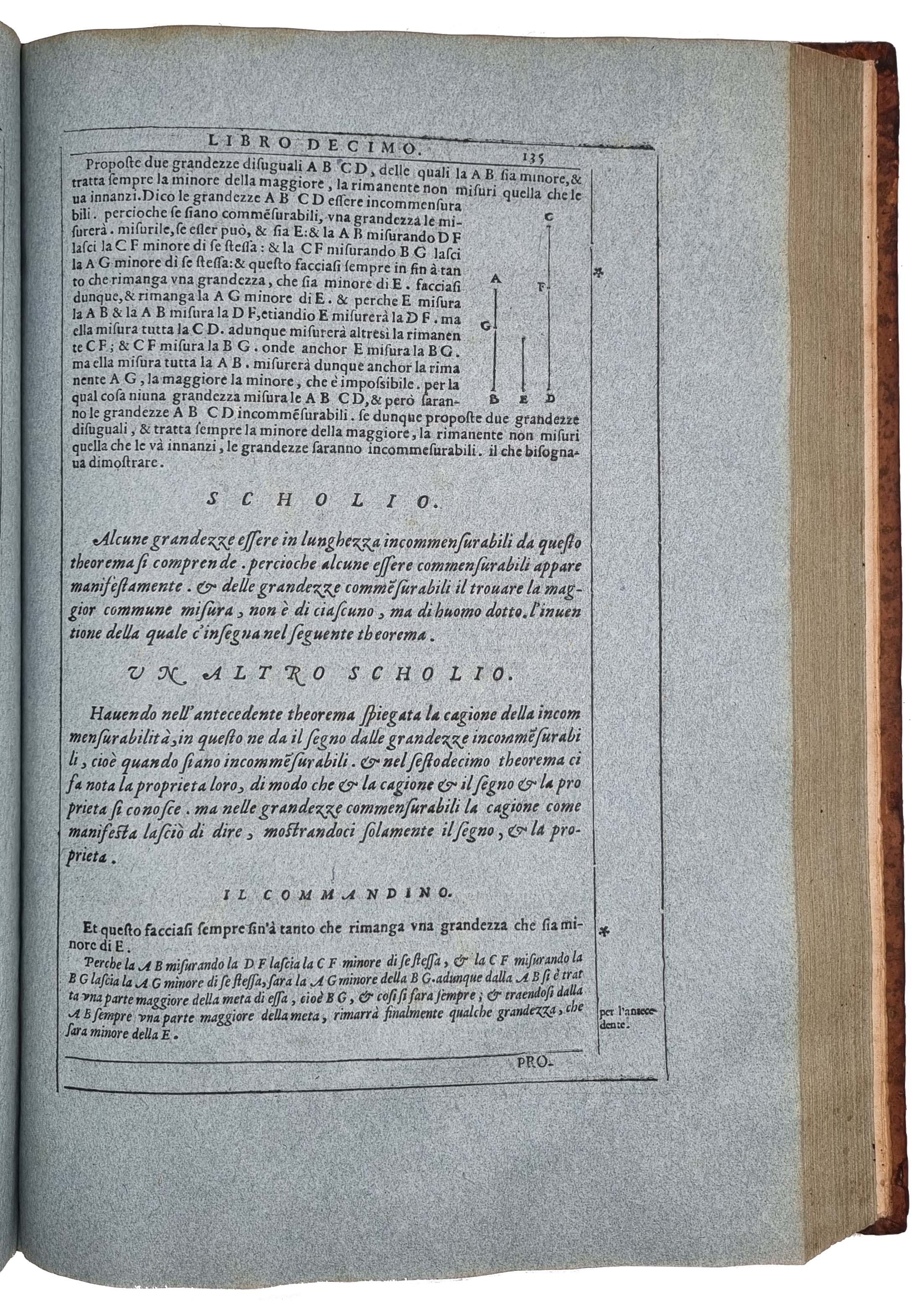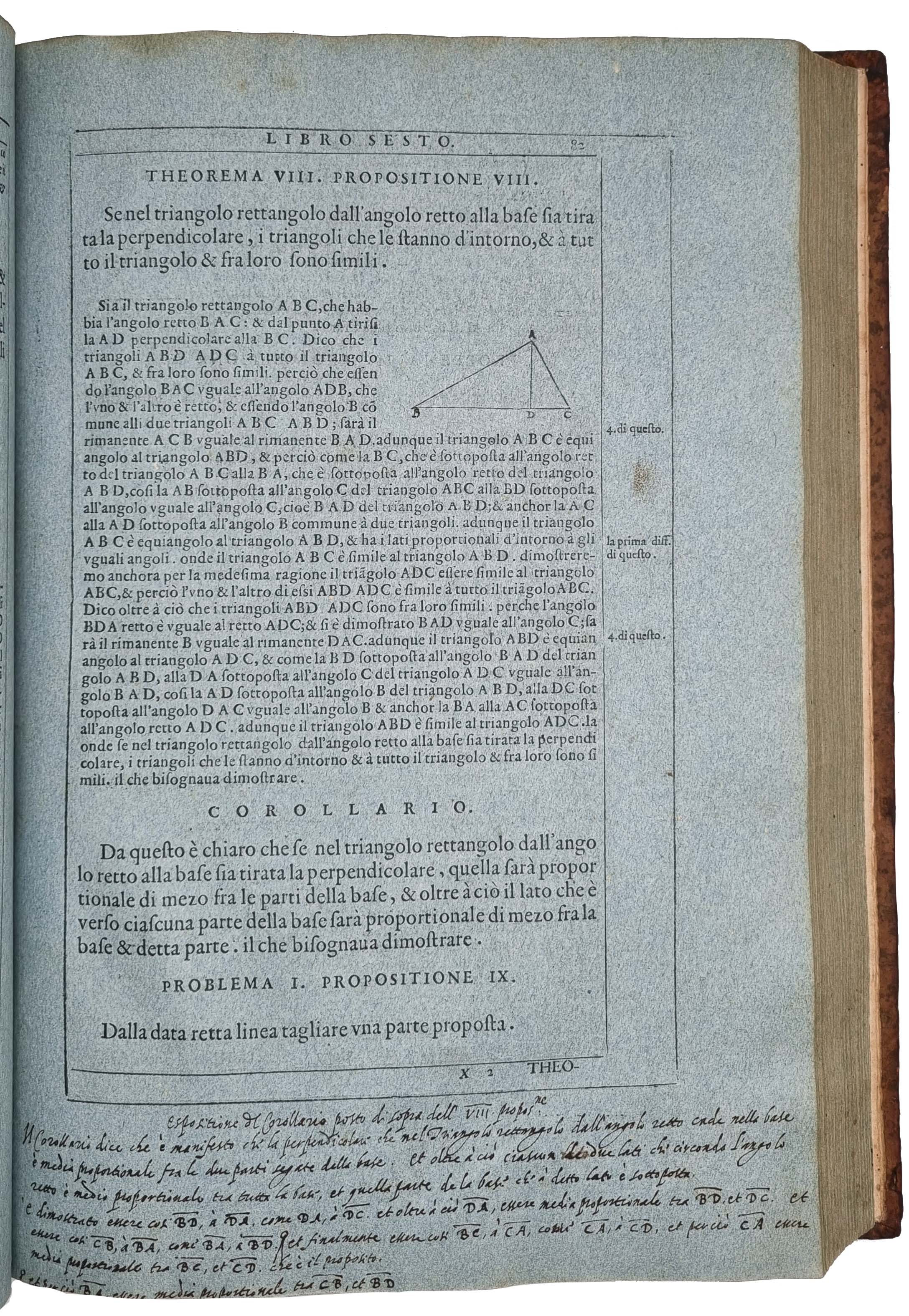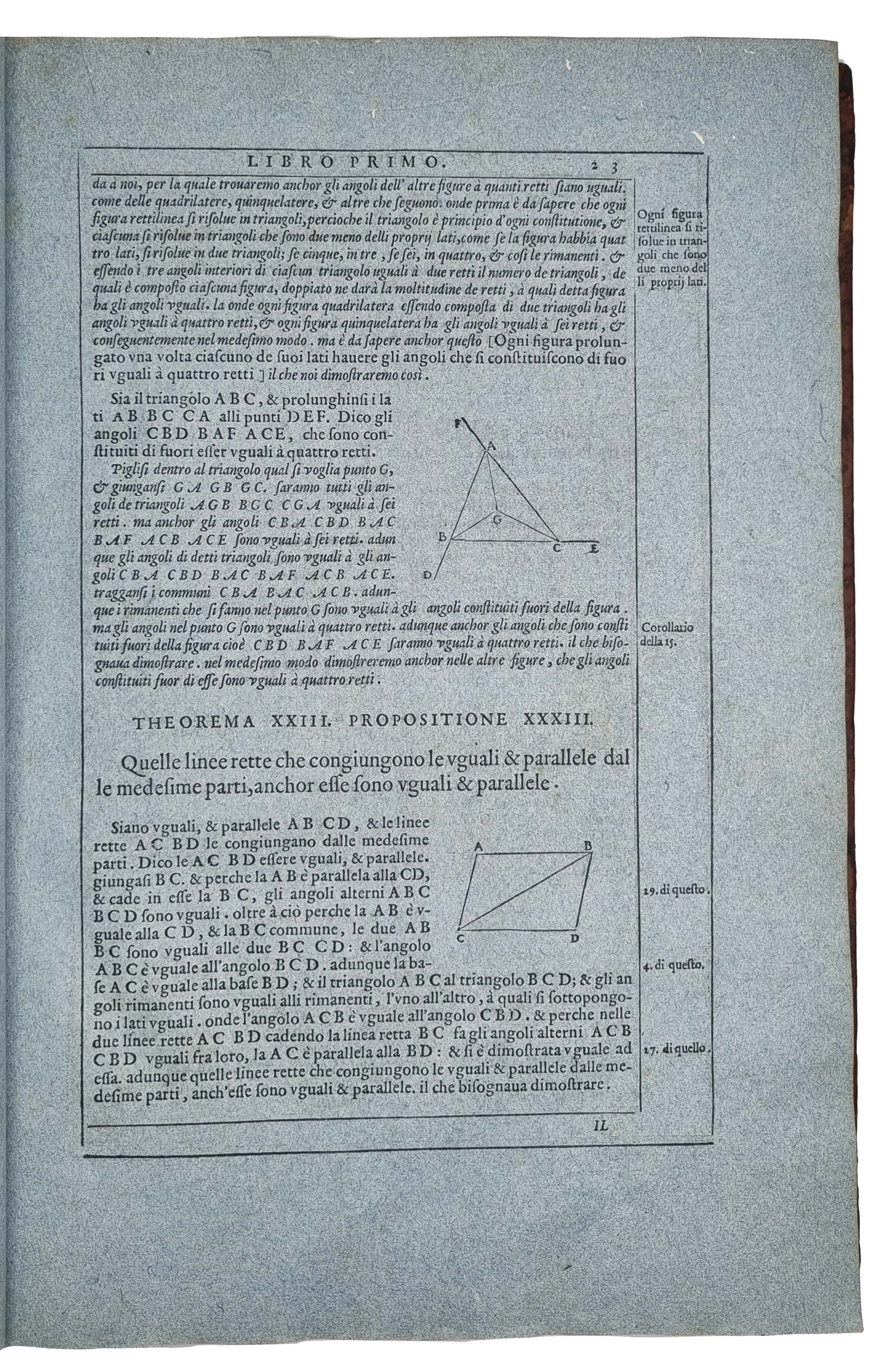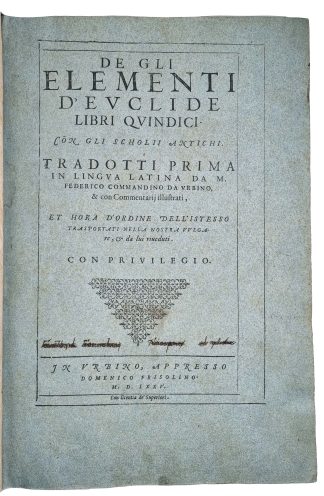EUCLID
VERY RARE – ON BLUE PAPER
De gli elementi d᾽Euclide
Urbino, D. Frisolino, 1575£39,500.00
FIRST EDITION thus. ff. (viii) 278. Roman letter, with Italic. All pages with typographical border, c.600 woodcut illustrations. One lower outer corner torn not touching text, a few tiny holes to lower margin of t-p. A very good copy, on blue paper, in early C17 calf, double gilt ruled, raised bands, spine in seven compartments, repaired at head and foot, one gilt-lettered, others double gilt ruled with large gilt fleuron. Modern bibliographical notes pencilled to front pastedowns and fep, earlier inked to rear pastedown and fly, C19 engraved bookplate c1800 of Conte della Trinità to front pastedown, erased early ex-libris to t-p, occasional Italian annotation.
This outstanding copy was printed on blue paper for presentation. No copies on blue paper of this edition are recorded in major bibliographies or at US libraries. Intended as a substitute for parchment, blue paper was first employed by Aldus, and perfected by Giolito, for ‘deluxe’ copies prepared for important personalities. It became an increasingly widespread practice with selected copies of particularly scientific and architectural works in the course of the C16. The translator and commentator of this edition, Federico Commandino, had also overseen the printing on blue paper of a limited Latin edition of Euclid’s ‘Elements’ in 1572.
Very rare copy, on blue paper, of the first Italian translation of Euclid’s ‘Elements’ edited by Federico Commandino. Commandino (1509-75) was a humanist from Urbino renowned for his translations of the works of ancient Greek mathematicians including Aristarchus of Samos and Pappus of Alexandria. Several of his Latin (and later vernacular) renditions of Greek mathematical terms, for which he relied on previous adaptations by Roman authors like Cicero and Vitruvius, became the standard. Euclid (4th century BC) was the first to reunite mathematical theories from the ancient world into a coherent, bi-dimensional system centred on simple axioms of plane geometry, based on angles and distance, from which further propositions (or theorems) could be deduced. His ‘Elements’ began with the crucial definition of ‘point’, ‘that which has no part nor size’ and which is only determined by two numbers defining its position in space—the fundamental notion on which the Euclidean geometrical system is based. The fifteen books of the work, the last two of which are now considered spurious, discuss plane and solid geometry, the theory of proportion and the properties of rational and irrational numbers. Euclid’s ‘Elements’ was commonly used in schools for centuries and is ‘the oldest mathematical textbook in the world’ (PMM 25).
This copy belonged to an early mathematician who wrote a long marginal re-phrasing of a corollary. Between the late C18 and early C19, it was in the collection of the bibliophile Count Remigio Filiberto Costa della Trinità.
USTC 828481; Riccardi I/1, 363; Thomas-Stanford 42; BM STC It., p. 568; Honeyman II, 1009 and 1010. Not in Brunet or Mortimer.In stock


